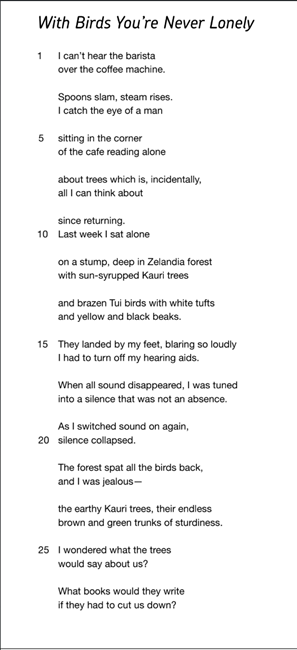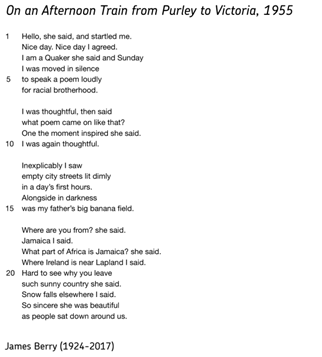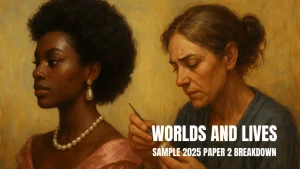Compare the ways that poets present lives in ‘With Birds You’re Never Lonely’ and one other poem from ‘Worlds and Lives’


Antrobus opens with a mundane café setting—noisy, anonymous, almost isolating: “I can’t hear the barista / over the coffee machine.” This reflects a common modern experience of disconnection in urban life, where interaction feels mechanical and impersonal. In contrast, he recalls a moment of peace in Zelandia forest, revealing a desire to escape and reconnect with something more meaningful.
Berry also begins in a seemingly ordinary moment—riding a train in 1950s Britain—but layers it with deeper social and cultural reflection. He observes the environment and people with quiet attentiveness, aware of how he, as a Black Caribbean man, is seen. ……
Video Breakdown preview
The video analyzes a Level 6 model answer and compares it to a Level 4 response for the 2025 AQA World and Lives poetry exam question:
“Compare the ways poets present lives in With Birds You’re Never Lonely and one other poem.”
The Level 6 response compares Raymond Antrobus’s With Birds You’re Never Lonely with James Berry’s On an Afternoon Train from Purley to Victoria. It explores how both poets present lives shaped by place, memory, identity, and observation. Antrobus reflects on internal disconnection and sensory experience, using nature and silence to explore belonging, while Berry examines public life, migration, and racial identity in 1950s Britain through quiet observation and cultural reflection.
The top-level essay shows:
-
-
Insightful comparisons of emotional tone, setting, and character experience.
-
Detailed language and form analysis (e.g. metaphor, tone, rhetorical questions, imagery).
-
Integrated context, especially around race, migration, and social perception.
-
A thematic focus on identity, solitude, connection, and human complexity.
-
In contrast, the Level 4 response demonstrates clear understanding but lacks depth. It’s often descriptive, with limited analysis of poetic methods and little contextual insight. It recognizes major themes but misses emotional nuance and writer intent.
The video ends by highlighting what makes a top-grade answer: original interpretation, emotional subtlety, method analysis, contextual understanding, and a conceptual argument sustained throughout.
 Alex Sharp is a seasoned English specialist with over a decade of experience teaching and examining GCSE English Literature and Language. As an AQA examiner, Alex has marked thousands of scripts, gaining deep insight into what examiners look for and...
Alex Sharp is a seasoned English specialist with over a decade of experience teaching and examining GCSE English Literature and Language. As an AQA examiner, Alex has marked thousands of scripts, gaining deep insight into what examiners look for and... 